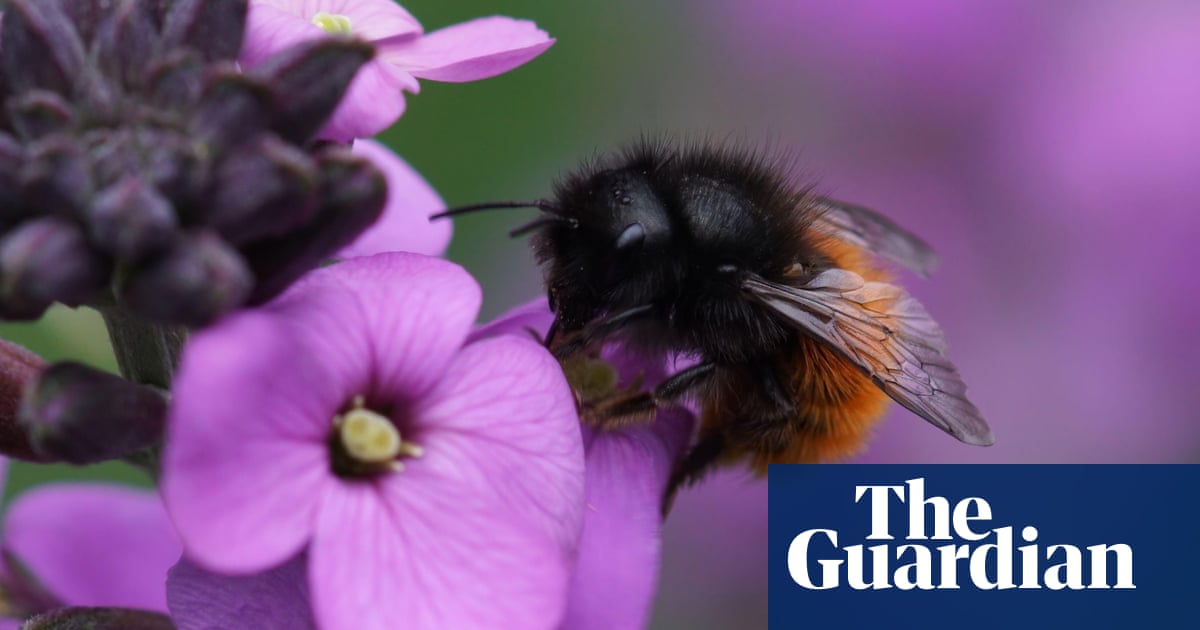The article highlights a noteworthy development amidst the ongoing climate crisis: the establishment of a new bee species, the European orchard bee (Osmia cornuta), in the UK. This species, recognized for its effective pollination abilities, particularly in early spring, presents a rare positive outcome as climate changes affect ecosystems.
Purpose of the Publication
The article aims to inform the public about the arrival of this new species and its implications for pollination in the UK. By emphasizing the bee's role in agricultural ecosystems, the piece seeks to raise awareness of biodiversity and the importance of pollinators in a changing climate. Moreover, it may encourage conservation efforts and support for urban gardening initiatives, which can foster habitats for this bee species.
Public Perception
The narrative suggests a positive development in the context of climate change, potentially fostering a sense of hope and resilience among readers. By focusing on the benefits of the climate crisis, the article may help mitigate the feeling of despair often associated with environmental issues, promoting a more optimistic view of adaptation and biodiversity.
Information Omitted
While the article is largely factual, it does not address the broader implications of climate change on existing species and ecosystems, which could present a more balanced view. It might downplay the potential threats to other pollinator species that are struggling due to the same climate changes that are enabling the European orchard bee to thrive.
Manipulative Aspects
The article may be viewed as mildly manipulative, as it emphasizes the positive aspects of climate change while neglecting the larger, possibly negative consequences. This selective focus could lead readers to overlook the urgency of addressing climate change and its detrimental effects on biodiversity overall.
Truthfulness of the Article
The information presented about the European orchard bee appears accurate, and the discussion of its characteristics and behaviors aligns with existing biological knowledge. However, the framing of the story could lead to misconceptions about the overall impacts of climate change.
Underlying Message
The article seems to convey a message of adaptation and resilience, encouraging readers to view climate change not solely as a crisis but also as a catalyst for new opportunities in biodiversity. This perspective may resonate particularly with environmental advocates and urban gardeners who seek to support pollinator populations.
Comparative Context
When compared to other articles on climate change, this piece stands out by highlighting a rare success story rather than focusing on the threats posed by climate change. This approach may serve to balance the often dire narratives prevalent in environmental reporting.
Impact on Society and Economy
The presence of a new pollinator could enhance agricultural productivity, particularly in fruit orchards, which may have positive economic implications for farmers and local economies. However, it is essential to consider how this new species interacts with existing ecosystems and what that means for agricultural practices.
Community Support
This article likely appeals to environmentally conscious communities, urban gardeners, and agricultural stakeholders. By highlighting the benefits of a new pollinator, it may galvanize support for initiatives aimed at promoting biodiversity.
Market Implications
In terms of stock market implications, companies involved in agriculture, particularly those focused on fruit production and pollination services, might see a positive impact from increased awareness of the European orchard bee’s role. This could lead to investments in sustainable practices.
Geopolitical Context
The article does not directly address broader geopolitical implications but fits into the wider discourse on climate adaptation strategies. It underscores the necessity for countries to adapt to climate changes and could influence environmental policy discussions.
AI Involvement
It is plausible that AI tools may have been used in drafting or editing the article, particularly in structuring the narrative or enhancing clarity. However, there is no clear indication of AI bias or manipulation, as the information presented is factual and informative.
In conclusion, the article offers a largely accurate account of the European orchard bee's establishment in the UK. While it promotes a positive perspective on biodiversity amid climate change, it may inadvertently downplay the overall challenges posed by the climate crisis. The selective focus on this new species could lead to a misunderstanding of the broader environmental context.
